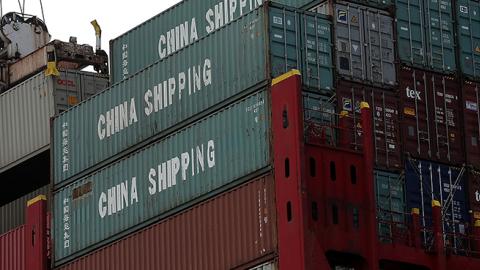The Trump administration’s announcement on Monday of a new round of tariffs on $200 billion worth of Chinese goods has dangerous repercussions for the rapidly growing U.S. chemicals sector. This huge U.S. industry has opposed the “tariff-first” trade policy of the administration, as the first rounds of Trump tariffs have resulted in retaliation patterns negative for this industry. Is there a better approach to taking on the obvious mercantilism of China and unfair trade practices in other parts of the world? A multilateral approach, in coordination with our traditional trading partners, would lessen the damage to the U.S. chemicals sector and could ultimately be more effective.
Now that tariffs on China have been expanded, there could be a sizable disruption to the promising growth path of this dynamic, export-oriented industry. With more than 800,000 workers and output well over $800 billion per year, the U.S. chemicals industry is one of the pillars of our manufacturing sector, and a key part of the Trump administration’s plan for economic revitalization. Corporate tax cuts and a lighter hand of regulation since 2016 have strengthened it considerably. The shale gas revolution has been a powerful force for growth in recent years, as natural gas and associated liquids are the leading feedstock for the chemicals industry, accounting for around two-thirds of raw material input in its production. Competitors such as Europe, Japan, and China rely on more expensive petroleum for basic feedstock and are at an inherent disadvantage due to the cost differential. The American Chemistry Council (ACC) estimates that the new investment in chemicals production publicly announced and linked directly to shale gas is more than $200 billion since 2010 and counting. Fifty-three percent of the investment is already completed and 80,000 new jobs are expected between 2015-2025 because of shale-related investment. Fixed capital investment in the industry grew by 40 percent since the end of the Great Recession and 2016, and accounted for 26 percent of all fixed capital investment in manufacturing in 2016.
Trade policy has aided the rise of this industry. The three biggest markets for U.S. exports, which account for nearly 20 percent of total output of all chemicals and plastics, are Canada, Mexico, and China. Exports to Mexico and Canada have more than tripled since the inception of the North American Free Trade Agreement (NAFTA), and the United States had a trade surplus of around $20 billion in chemicals in 2017. Pharmaceutical exports to China have grown by 650 percent since 2007. Although it has a small trade deficit with the Middle Kingdom in this sector, much of this is likely due to intra-company trade between U.S. firms operating in China and their parent in the United States. Seventy percent of all U.S. chemical imports are from intra-company trade. Worldwide, the United States has a small trade deficit in chemicals, although it would be a surplus if imports of pharmaceuticals from Ireland were not counted. (U.S. firms relocated production of final product to Ireland in the last few decades to take advantage of its extremely low corporate tax rate.) The ACC estimates that a properly executed North American trade agreement could expand U.S. exports by another 34 percent in the next seven years.
According to the ACC, the Section 301 tariffs on China, which have already spurred retaliation by the Chinese, are a dangerous threat to the industry. In the second wave of U.S. tariffs imposed on Chinese products implemented in August, 54 percent of the products affected were in the chemicals and plastics industry. The U.S. list for the latest round of tariffs targets $15 billion worth of chemicals and plastics products from China, the majority of which have no alternative foreign sources of supply. In its testimony to the U.S. Department of Commerce, the ACC notes that “significant disruptions of supply chains … would significantly disadvantage the competitiveness of U.S. manufacturers.”
Retaliatory tariffs from China already cover over $2 billion in U.S. plastics and chemicals products, and. There is also collateral damage to the chemicals sector from Chinese retaliation, because the “crop protection” products used by soybean farmers will be affected if new markets cannot be found to replace the lost Chinese sales.















